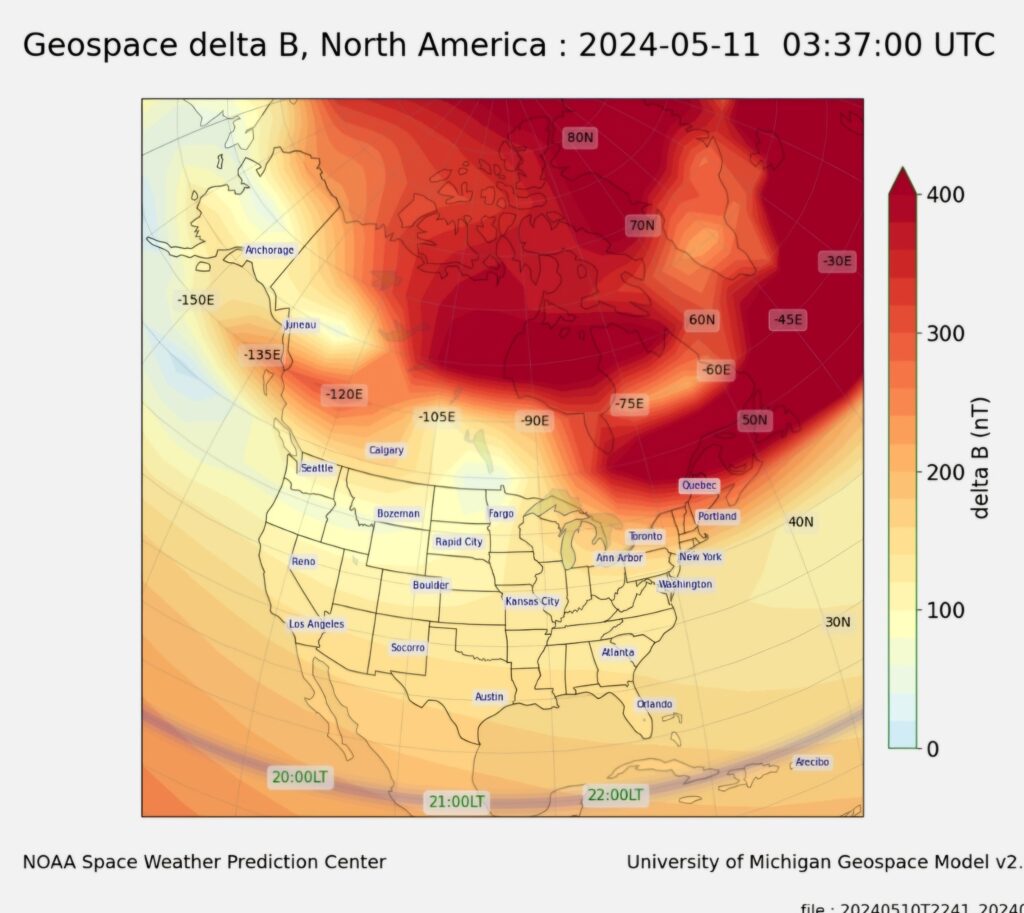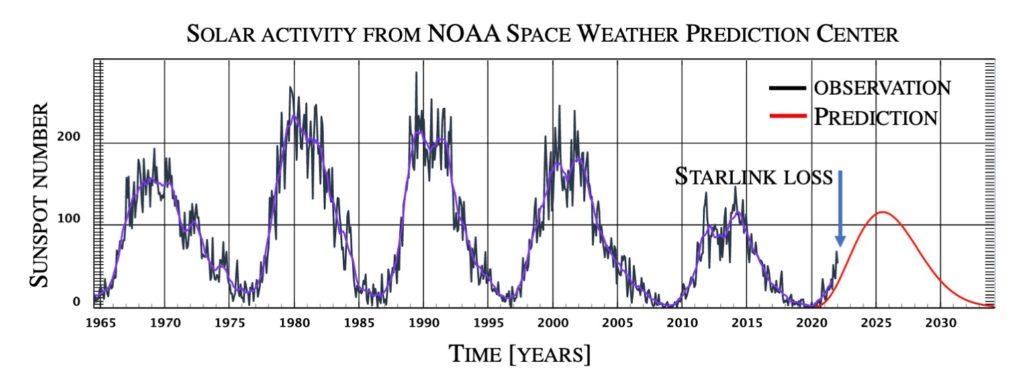Space storms, and “space weather” in general, pose a hazard to technological systems and humans in space as well as on Earth. The electromagnetic disturbances and particle radiation can cause disruption of satellite operations, communications, navigation, and electric power distribution grids on ground, leading to a variety of societal problems and economic losses.
The great geomagnetic storm on May 11-12, 2024 followed from the launch of five consecutive CMEs from the Sun. The auroras were widely seen at very low latitudes, this example is from Ann Arbor, MI. The University of Michigan Geospace model was (as usual) run by the NOAA Space Weather prediction center, the bottom two panels show the Geospace predictions of the planetary Kp and Dst indices describing level of geomagnetic activity. The auroras are associated with local magnetic field variations, so the map showing deltaB also illustrate areas which had high probability for auroral detection.
The solar eclipse on April 11, 2024 is a great opportunity to practice our space weather prediction capabilities. The video shows a prediction of the coronal structure made two weeks in advance using the University of Michigan Space Weather Modeling Framework (courtesy Xianyu Liu, Dan Welling and Gabor Toth).
On February 3, 2022, SpaceX launched 49 Starlink satellites to low-Earth orbit (200-250 km altitude), from where they were to be lifted to their final orbits at higher altitude. As the satellites were launched, a geomagnetic storm was waning, but was soon followed by another one. The energy dumped into the upper atmosphere increased the atmospheric drag, which may have been the cause of re-entry of 40 of those 49 spacecraft. The event made the news: Business insider, MIT Technology Review, New York Times, and others.
As the storms that caused the de-orbiting were nothing out of the ordinary, and the Solar activity that varies on a 11-year cycle is on the rise, we need better awareness of the space weather hazards as we continue to develop our space-based assets.





